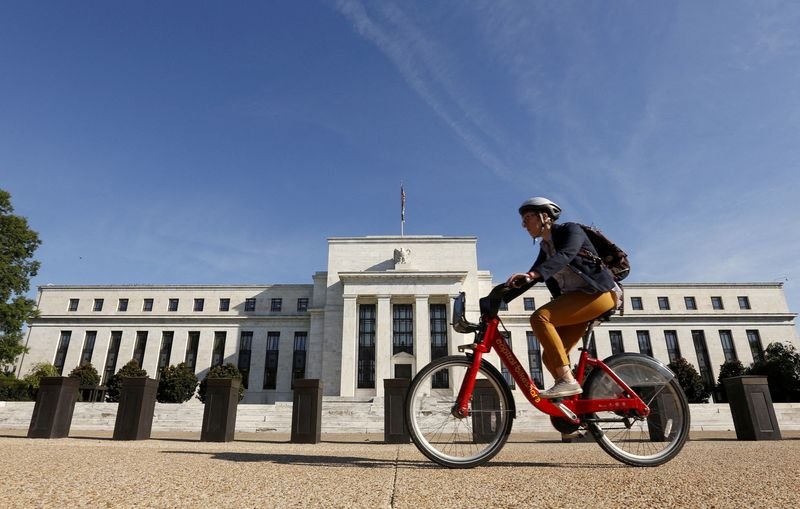J.P. Morgan Predicts Federal Reserve Rate Cuts Ahead
In recent economic forecasts, J.P. Morgan has projected that the Federal Reserve will lower interest rates in each of its upcoming four meetings. This outlook comes amidst ongoing discussions about inflation, economic growth, and labor market dynamics.
Current Economic Landscape
As the economy evolves, various factors influence the Federal Reserve’s decisions on interest rates. Inflation rates, consumer spending, and the overall health of the job market are critical indicators that policymakers closely monitor. Presently, inflation appears to be stabilizing, giving rise to speculation about possible rate adjustments.
J.P. Morgan’s Analysis
According to J.P. Morgan’s latest insights, a series of rate cuts could signal a more accommodative monetary policy. The banking giant suggests that these adjustments aim to bolster economic activities, particularly in sectors that have shown signs of slowing down. The anticipated rate cuts could make borrowing cheaper for consumers and businesses, which may lead to increased spending and investment.
Implications for Borrowers and Savers
For individuals and businesses contemplating loans, this prediction offers a favorable outlook. Lower interest rates typically mean more attractive borrowing conditions. Home buyers, for instance, could benefit from reduced mortgage rates, ultimately facilitating more accessible housing opportunities.
On the flip side, savers may face challenges as interest rates drop. Lower returns on savings accounts and fixed deposits could deter saving behaviours, prompting individuals to explore alternative investment avenues with more favorable returns.
Business Impact
Businesses, particularly those that rely on loans for expansion, may find the anticipated rate cuts beneficial. Cheaper loans enable companies to invest in growth opportunities, hire more staff, and innovate. This influx of capital can stimulate productivity and, in turn, elevate overall economic growth.
Moreover, sectors such as automotive and housing, which are sensitive to interest rate changes, could experience a resurgence as consumers find it easier to finance large purchases. Analysts believe that the positive ripple effects from rate cuts could be felt across various industries, sustaining the economy through potential headwinds.
External Economic Factors
While J.P. Morgan’s forecast primarily hinges on domestic concerns, global economic conditions also play a significant role. Trade tensions, geopolitical developments, and economic stability in other countries can influence the Federal Reserve’s decisions. As the global landscape shifts, the Fed must navigate these complexities while maintaining its dual mandate: stable prices and maximum sustainable employment.
Adjusting Expectations
Market participants must remain adaptable. If the Federal Reserve follows through on J.P. Morgan’s predictions, there may be a shift in investor sentiment. Fixed income markets, equities, and commodities could react to the changing rate environment, emphasizing the importance of monitoring developments in monetary policy closely.
Investors are encouraged to review their portfolios and consider potential adjustments in alignment with the evolving economic landscape. Diversification and a strategy that hedges against interest rate changes could provide a buffer as conditions fluctuate.
Future Projections
Looking ahead, Federal Reserve officials will likely become more transparent about their decisions. Markets await clear communications regarding the timing and extent of potential rate cuts. Such clarity will help guide investor behavior and provide insights into the trajectory of both the U.S. economy and the global market.
As we approach the Fed’s upcoming meetings, it is essential to stay informed about the latest developments and analyses from experts. Being proactive will allow individuals and businesses to make more informed financial decisions in anticipation of the potential rate cuts J.P. Morgan has forecasted.
Conclusion
In summary, J.P. Morgan’s projection of consecutive rate cuts by the Federal Reserve highlights a pivotal moment in economic policy. The implications of these potential changes will resonate across various sectors, influencing not just consumer behavior but also the broader economic trajectory. Keeping informed about these developments will empower stakeholders to navigate this evolving landscape effectively.
